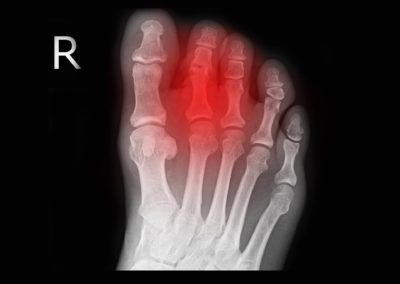Freiberg’s Disease
What is Freiberg’s Disease?
Freiberg’s disease is an uncommon condition whereby the blood supply to a metatarsal head within the foot is compromised. Although people of all ages can be diagnosed it is a condition that’s most commonly found in teenage girls, often occurring during the growth spurt of puberty.
What Causes Freiberg’s Disease?
The disease typically presents during the growth spurt at puberty and is likely caused by a loss of blood supply to the end of the bone. This could be caused by repetitive strain on the bone which results in subtle damage or microfractures at the growth plate and results in the bone developing in an abnormal shape.
Symptoms of Freiberg’s Disease include:
- Pain in the forefoot associated with physical activity.
- Localised stiffness and swelling, particular in the metatarsophalangeal joint.
- A visible limp.
What are the Treatment Options for Freiberg’s Disease?
Conservative and surgical treatment options can help in the treatment of Freiberg’s Disease.
Conservative treatments aim to reduce the pressure on the painful toe when patients are active and thus relieve symptoms. This can be through the application of correctly padded insoles and orthoses and supportive footwear.
Pain medication – such as cortisone injections – can also be effective to treat symptoms.
If conservative treatment options are unsuccessful then surgical treatment can be considered and Mr. Kannegieter can discuss these options with you.

